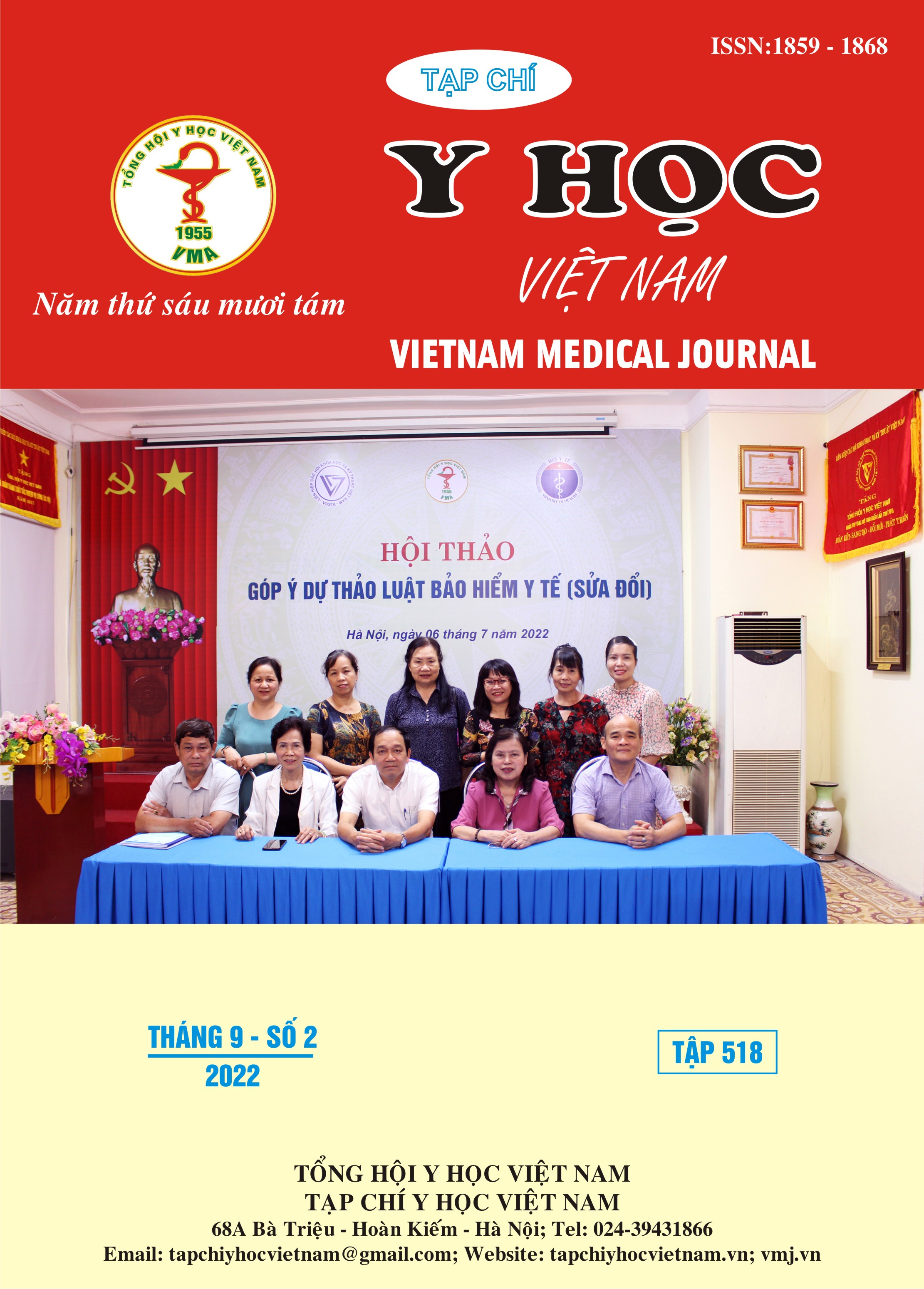RESEARCH ON CLINICAL CHARACTERISTICS OF PATIENTS with PERIPHERAL VERTIGO AT THE DEPARTMENT OF GENERAL INTERNAL MEDICINE - HAI DUONG MEDICAL UNIVERSITY HOSPITAL
Main Article Content
Abstract
Objective: To describe the clinical characteristics of patients with peripheral vertigo at the Department of General Internal Medicine, Hai Duong Medical University Hospital. Subjects and research methods: cross-sectional description, convenient sampling. Results: Peripheral vertigo was more common in women (80.8 %) than in men (19.2%), the ratio of women: men = 4 : 1. The most affected age group was > 60 years old. accounted for 51.9%. Patients with paroxysmal positional vertigo predominate with the rate of 94.2%. The majority of cases had symptoms of vertigo, accounting for 84.5%, feeling floating in 55.7%. The most common accompanying symptoms were nausea 86.5%, followed by vomiting 59.6%, tinnitus 28.8%, hearing loss 3.8% and feeling of fullness 1.9%. Conclusion: Peripheral vertigo is a fairly common disease in the elderly and the main cause is benign paroxysmal postural vertigo.
Article Details
Keywords
peripheral vertigo, benign paroxysmal postural vertigo
References
2. Hồ Vĩnh Phước (2010). “Nghiên cứu đặc điểm lâm sàng và điều trị chóng mặt tư thế kịch phát lành tính”. Tạp chí y học TP Hồ Chí Minh, tập 14 (1), tr.341-346.
3. Phan Kim Ngân (2015). Đánh giá tình trạng chóng mặt ngoại biên hiện nay tại khoa nội thần kinh tổng quát Bệnh viện Nhân Dân 115, Luận án chuyên khoa cấp II, Trường Đại học Y Dược Thành Phố Hồ Chí Minh
4. Vũ Anh Nhị (2013). “Chóng mặt”. Sổ tay Lâm Sàng Thần Kinh sau đại học, Nhà xuất bản Đại học Quốc gia TP. Hồ Chí Minh, tr.196-227
5. Bunasuwan P., Bunbanjerdsuk S., Nilsuwan A., (2011). “Etiology of vertigo in Thai patient at Thammasat Hosspital”. J.Med Assoc Thai, Vol 94 (7), 102-108.
6. Bronstein A.M, Golding J.F, Gresty M.A, et al (2010). “The social impact of dizziness in London and Siena”. J Neurol, 257(2),183–190
7. Halker R.B., Barrs D.M., Wellik K.E., et al (2008). “Establishing a diagnosis of benign paroxysmal positional vertigo through the dix-hallpike and site –lying maneuvers a critically appraised topic”. Neurologist, Vol 14 (3), 201-204.
8. Kovacs E.,Wang X.,and Grill E., (2019).”Economic burden of vertigo: a systematic review”. Health Economics Review, 9(1), 1-14
9. Sumner A (2012), “The Dix-Hallpike Test”. J Physiother, Vol 58(2), pp.131


